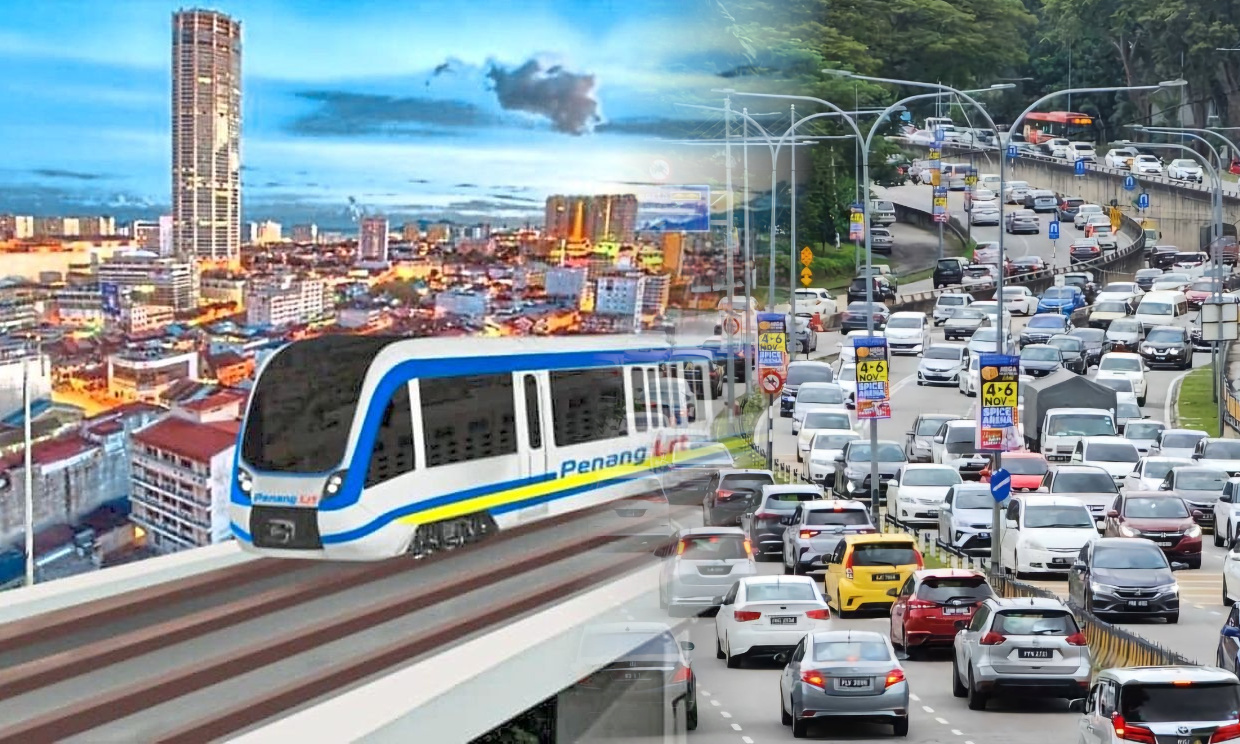Penang braces for traffic woes as Mutiara LRT construction begins
Penang is set to experience years of traffic congestion as construction for the long-awaited Mutiara Line Light Rail Transit (LRT) project gets underway. The six-year project, aimed at improving the state’s public transport network, will bring major road diversions and closures along several of the island’s busiest routes.
According to SRS Consortium project director Adil Putra Ahmad, significant traffic adjustments will be made in Komtar, Sunny Point in Gelugor, and the Free Industrial Zone (FIZ) in Bayan Lepas—three areas expected to face the worst congestion. In particular, Jalan Sultan Azlan Shah in Bayan Lepas, one of Penang’s busiest industrial corridors, will be reduced from six lanes to four.
“Motorists will face diversions at key locations, with traffic lights removed and U-turns introduced to improve traffic flow during a 38-month period from this month until December 2028,” Adil said. He added that utility mapping for underground infrastructure such as water pipes and electrical lines will be conducted before excavation to minimise service disruptions.
Preparatory works for the diversions are set to begin at the end of October, with rerouting and junction closures expected early next year.
Managing traffic during the construction phase will be one of the project’s biggest challenges, said MRT Corp project director Azmi Abd Rahman. “We have minimal buffer space and limited room for diversion,” he noted, assuring that the project has received environmental clearance and contractors must comply with the Environmental Impact Assessment (EIA) plan to control dust and vibration.
Concerns have also been raised by Penang’s industrial stakeholders. InvestPenang CEO Datuk Loo Lee Lian highlighted that around 350,000 people travel daily between the island and mainland for work in the manufacturing sector. “Any downtime due to flooding or congestion can lead to major operational losses. Companies’ HR departments will need to manage employee hours carefully,” she said.
In response, Bayan Baru MP Sim Tze Tzin encouraged companies to adopt flexible work arrangements and promote carpooling to ease peak-hour congestion.
Penang’s infrastructure, transport and digital committee chairman Zairil Khir Johari urged patience from the public, describing the Mutiara LRT as Penang’s most ambitious infrastructure project to date. “The alignment connects key destinations such as USM, Penang International Airport, the Penang Waterfront Convention Centre, and Setia SPICE. It will also link to Penang Sentral on the mainland, integrating with the national rail network,” he said.
Stretching 29km from Silicon Island to Penang Sentral, the Mutiara Line will feature 21 stations. When operational, it is expected to carry 3,000 passengers per hour per direction initially, scaling up to 15,000 passengers per hour by 2060.
While Penangites may face years of traffic disruptions ahead, the state government believes the long-term benefits—reduced congestion, improved connectivity, and sustainable urban growth—will far outweigh the temporary inconvenience.Penang Braces for Traffic Woes as Mutiara LRT Construction Begins
Join our Telegram Channel now to receive instant update on Penang latest projects and property news









